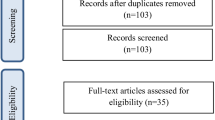Summary
In recent years nutritional status gained greater attention as a surgical risk factor. This study analyzes the frequency of malnutrition in surgical patients with solid and operable tumors, the relation to the type of tumor and stage of the disease. In addition, the clinical value of the measurements carried out is discussed. The analysis was performed in 100 cancer patients (34 gastric cancer, 56 colorectal cancer, and 10 breast cancer). The nutritional assessment included individual dietary habits, ideal weight/height, triceps skinfold, arm muscle circumference, creatinine-height index, serum protein, albumin, prealbumin, cholinesterase, transferrin, total peripheral lymphocytes, and skin tests. The results were compared with international standards or normal plasma concentrations respectively. Most patients suffered from an alternation of the nutritional parameters indicating malnutrition, mostly Kwashiorkor-Marasmus Mix. Patients with gastrointestinal cancer, especially gastric cancer showed more often a decline of the nutritional status than patients with breast cancer. Malnutrition became more severe with advanced disease. The parameters examined revealed varying significance with respect to the assessment of the nutritional status. Some measurements showed little clinical importance; the reasons are discussed.
Zusammenfassung
Dem Ernährungszustand als allgemeinem Risikofaktor wird in neuerer Zeit mehr Beachtung geschenkt. An einem chirurgischen Krankengut mit soliden operablen Tumoren wurde die Häufigkeit der Ernährungsstörungen untersucht, deren Abhängigkeit vom Tumortyp bzw. Tumorstadium überprüft sowie die Wertigkeit der untersuchten Parameter diskutiert. Hierzu wurde bei 100 Patienten (34 Magen-Ca., 56 colorectale Ca., 10 Mamma-Ca.) eine ausführliche Erhebung des Ernährungszustandes durchgeführt (Anamnese, KG, OKG, Tricepshautfaltenmessung THF, Armmuskelumfangmessung AMU, Kreatininindex KI, Protein- und Albumin-Bestimmung im Serum, Prdalbumin, Cholinesterase, Transferrin, Immunstatus). Der Vergleich mit Standardwerten sowie Normalwerten eines gesunden Bevölkerungskollektivs ergab, daß die Mehrzahl der Carcinompatienten Veränderungen der gemessenen Parameter aufwies, die auf eine Fehl- bzw. Mangelernährung hinwiesen. Meist handelte es sich um Mischbilder eines Protein-CalorienMangels und eines reinen Proteinmangels. Tumorpatienten mit gastrointestinalen Carcinomen, insbesondere Magencarcinom, zeigten häufiger Veränderungen als Patientinnen mit Mammacarcinom. Mit zunehmendem Tumorstadium konnte eine Zunahme dieser Veränderungen nachgewiesen werden. Die einzelnen Meßgrößen waren in ihrer Aussagekraft sehr unterschiedlich und für klinische Belange teilweise wenig geeignet, die Gründe hierfür werden im einzelnen diskutiert.
Similar content being viewed by others
Literatur
Bistrian BR, Blackburn GL, Hallowell E, Heddle R (1974) Protein status of general surgical patients. JAMA 230:858
Bistrian BR, Blackburn GL, Sherman M, Scrimshaw NS (1975) Therapeutic index of nutritional depletion in hospitalized patients. Surg Gynecol Obstet 141:512
Blackburn GL, Benotti PN, Bistrian BR, Bothe A, Maini BS, Schlamm HT, Smith MF (1979) Nutritional assessment and treatment of hospital malnutrition. Infusionstherapie 6:238
Bozzetti F, Mighavacca S, Scotti A, Bonalumi MG, Scarpa D, Baticci F, Ammatuna M, Pupa A, Terno G, Sequeira C, Masserini C, Emanuelli H (1982) Impact of cancer, type, sitc. stage and treatment on the nutritional status of patients. Ann Surg 196:170
Brenner U, Müller JM, Keller H, Schmitz M, Horsch S (1983) Ein neuer Ernährungsindex zur präoperativen Beurteilung der Mangelernährung als Risikofaktor in der Chirurgie. Infusionstherapie 10:302
DeWys WD (1981) Weight loss in cancer patients: Prognostic and pathophysiologic considerations. In: Kluthe R, Löhr GW (Hrsg) Nutrition and metabolism in cancer. Thieme, Stuttgart New York
Gofferje H, Fekl W, Brand O, Rupprecht M (1979) Untersuchungen zur Mangelernährung in einer medizinischen Klinik. Z Ernährungswiss 18:62
Grant JP, Custer PB, Thurlow J (1981) Current techniques of nutritional assessment. In: Mullen JL, Crosby LO, Rombeau JL (Hrsg) The surgical clinics of North America, vol 61,3. Symposium on surgical nutrition. Saunders, Philadelphia
Hill GL, Pickford J, Young GA, Schorah CJ, Blackett RL, Burkinshaw L, Warren JV, Morgan DB (1977) Malnutrition in surgical patients — an unrecognised problem. Lancet 1:689
Irvin TT, Goligher JC (1973) Etiology of disruption of intestinal anastomoses. Br J Surg 60:461
Jelliffe DB, Jelliffe EFP (1960) The prevalence of proteincalorie malnutrition of early childhood in Haiti. Am J Publ Health 50:1355
Jelliffe DB (1966) The assessment of the nutritional status of the community. WHO Monograph Series 53:241
Klidjian AM, Foster KJ, Kammerling RM, Cooper A, Karran SJ (1980) Relations of anthropometric and dynamometric variables to postoperative complications. Br Med J 281:899
Merkle NM (1983) Zur Bedeutung des Ernährungsstatus chirurgischer Patienten und der unmittelbar postoperativen enteralen Ernährung nach Operationen am Intestinaltrakt -Ergebnisse klinischer Studien. Habilitationsschrift, Universität Ulm
Mullen JL, Buzby GP, Waldman MT, Gertner MH, Hobbs ChL, Rosato EF (1979) Prediction of operative morbidity and mortality by preoperative nutritional assessment. Surg Forum 30:80
Ott H (1963) Normalgewicht und Optimalgewicht. Ernährungsumschau 10:49
Reinhardt GF, Myscofski JW, Wilkens DB (1980) Incidence and mortality of hypoalbuminemic patients in hospitalized veterans. J Parent Ent Nutr 4:357
Roth E, Winter M, Funovics J, Schulz F, Huk J, Fritsch A (1982) Mangelernährung und postoperative Komplikationsrate bei Karzinompatienten. Langenbecks Arch Chir 357:77
Schmitz J-E, Merkle NM, Heinz E, Berg S, Grünert A, Ahnefeld FW (1983) Erfahrungen mit einem einfachen Schema zur Beurteilung eines ernährungsbedingten Operationsrisikos. Infusionstherapie 10:292
Seltzer MH, Cooper DN, Ingler P (1979) Instant nutritional assessment. J Parent Ent Nutr 3:157
Simms JM, Smith JAR, Woods HF (1982) A modified prognostic index upon nutritional measurements. Clin Nutr 1:71
Swobodnik W, Wechsler JG, Wenzel H, Hoch A, Ditschuneit H (1982) Estimation of fat body mass in normal weight persons with three different methods. Clin Nutr 1:83
UICC (1979) TNM-Klassifikation der malignen Tumoren. Springer, Berlin Heidelberg New York
Wynder EL, Reddy BS, McCoy GD, Weisburger JH, Williams GM (1977) Diet and cancer of the gastrointestinal tract. Adv Int Med 22:397
Author information
Authors and Affiliations
Rights and permissions
About this article
Cite this article
Merkle, N.M., Schmitze, J.E., Grünert, A. et al. Zur Bedeutung des Ernährungsstatus chirurgischer Patienten. Langenbecks Arch Chiv 365, 109–125 (1985). https://doi.org/10.1007/BF01261138
Received:
Issue Date:
DOI: https://doi.org/10.1007/BF01261138




